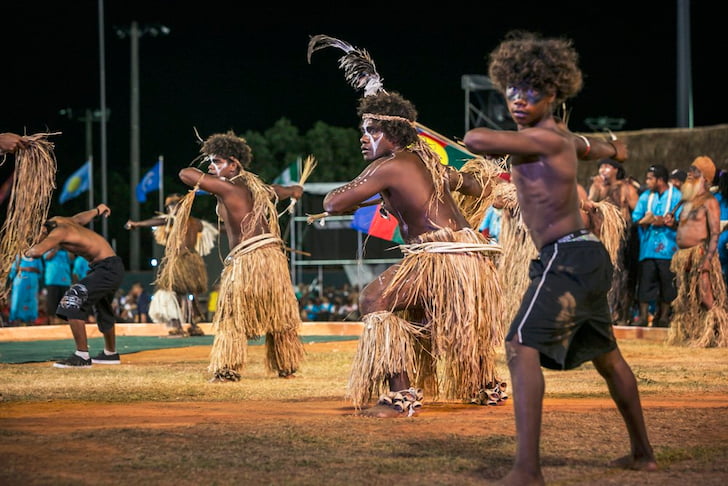The Festival of Pacific Arts and Culture was conceived by the Pacific Community, an international development organization uniting Pacific countries and territories, and several developed countries with strategic interests and territories in the region: American Samoa, Australia, Cook Islands, Fiji, France, French Polynesia, Guam, Kiribati, Marshall Islands, Micronesia, Nauru, New Caledonia, New Zealand, Niue, Northern Mariana Islands, Palau, Papua New Guinea, Pitcairn Islands, Samoa, Solomon Islands, Tokelau, United Kingdom, United States, Vanuatu, and Wallis and Futuna.
The creation of the festival was the result of a discussion on the need to preserve, celebrate, showcase, and promote the unique cultural identities of Pacific Island nations. It was designed as a meeting place and platform where Pacific Islanders could share their traditional music, songs, dance, oral traditions, arts, and crafts with each other and the world. This cultural exchange was supposed to strengthen cultural bonds among diverse Pacific Island communities and help the general public better understand their cultures.
The inaugural festival was held in May 1972 in Suva, Fiji under the motto “Preserving culture”. Its main goal was and still is to prevent the erosion of traditional cultural practices of indigenous Pacific Islanders by sharing their culture and arts at each festival. Since then, the festival has been held every four years, in the same year as the Summer Olympics, except for 2020, when it was canceled due to the COVID-19 pandemic.
For every festival, the Pacific Cultural Council select a new host country or territory, giving it the opportunity to showcase its unique culture and hospitality. Past hosts have included Fiji, New Zealand, Papua New Guinea, French Polynesia, Australia, Cook Islands, Samoa, New Caledonia, Palau, American Samoa, Solomon Islands, Guam, and Hawaii (United States).
Today, the Festival of Pacific Arts and Culture is a highly anticipated cultural event that attracts thousands of performers from Pacific Islands countries and territories, and around 200,000 visitors from all over the world. Thanks to the festival, artists and cultural practitioners representing the participating nations get the opportunity to exchange experiences and stories, learn from each other, and reflect on their common heritage while celebrating their differences.
The program of FestPAC usually includes the grand opening and closing ceremonies, an art and craft market, interactive art and craft workshops and demonstrations, fashion showcases, traditional and contemporary dance and music performances, visual arts exhibitions and immersive experiences, film screenings, panel discussions, symposia and conferences, educational forums, traditional games and competitions, and other exciting events and activities held in several venues.

Photo: festpachawaii.org




